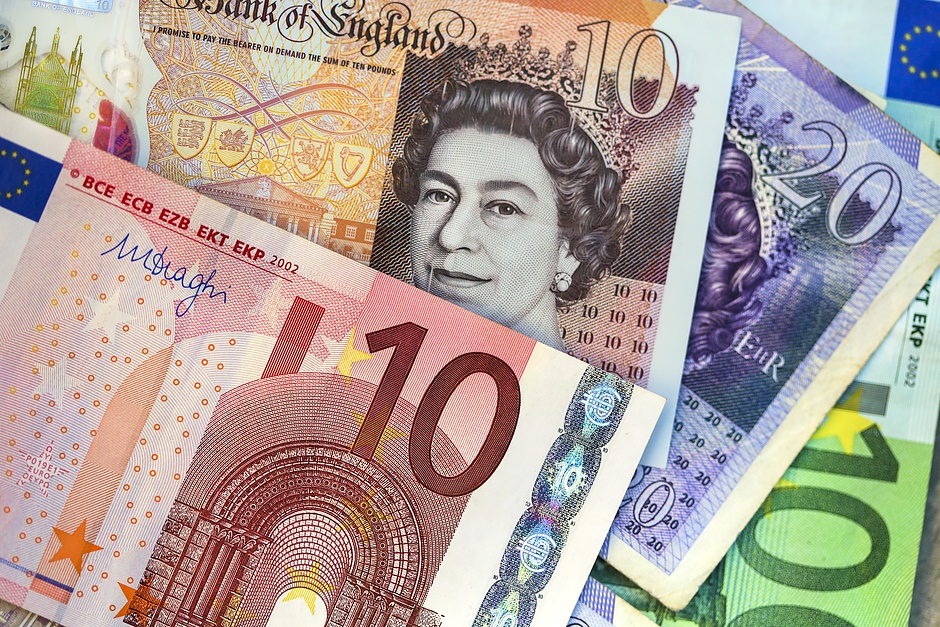EUR/GBP remains below 0.8450 following HCOB PMI data from Eurozone
- EUR/GBP pares its intraday gains after the downbeat HCOB PMI data from Eurozone and Germany.
- Eurozone Services PMI decreased to 52.9 in August, from 53.3 in the previous month.
- The Pound Sterling may appreciate it as the BoE is expected to deliver no rate cut in September.

EUR/GBP trims its intraday gains following the release of HCOB Purchasing Managers Index (PMI) data from the Eurozone and Germany, trading around 0.8430 during Wednesday’s European session. The Eurozone Services PMI decreased to 52.9 in August, from 53.3 in the previous month. Meanwhile, the Composite PMI dropped to 51.0, missing expectations and falling below the previous reading of 51.2, which was expected to remain unchanged.
In Germany, the HCOB Services PMI declined to 51.2 in August, slightly below market expectations of no change from the previous 51.4 reading. Meanwhile, the Composite PMI also fell to 48.4, just under the anticipated and prior reading of 48.5.
However, the upside potential for the EUR/GBP cross may be limited, as the Euro may face challenges amid strong speculation that the European Central Bank (ECB) will cut interest rates in September. This would mark the second interest rate cut by the ECB since it began shifting toward policy normalization in June. Policymakers remain confident that inflation will gradually return to the bank's 2% target by 2025.
The EUR/GBP cross may struggle as traders anticipate no rate cut by the Bank of England (BoE) in the September meeting. However, traders expect a 25 basis points (bps) interest rate cut in the November meeting.
Growing concerns about the global economy have intensified after weak PMI data from the world's two largest economies. Traders will be closely watching the PMI data from the United Kingdom (UK) later in the day.
Interest rates FAQs
Interest rates are charged by financial institutions on loans to borrowers and are paid as interest to savers and depositors. They are influenced by base lending rates, which are set by central banks in response to changes in the economy. Central banks normally have a mandate to ensure price stability, which in most cases means targeting a core inflation rate of around 2%. If inflation falls below target the central bank may cut base lending rates, with a view to stimulating lending and boosting the economy. If inflation rises substantially above 2% it normally results in the central bank raising base lending rates in an attempt to lower inflation.
Higher interest rates generally help strengthen a country’s currency as they make it a more attractive place for global investors to park their money.
Higher interest rates overall weigh on the price of Gold because they increase the opportunity cost of holding Gold instead of investing in an interest-bearing asset or placing cash in the bank. If interest rates are high that usually pushes up the price of the US Dollar (USD), and since Gold is priced in Dollars, this has the effect of lowering the price of Gold.
The Fed funds rate is the overnight rate at which US banks lend to each other. It is the oft-quoted headline rate set by the Federal Reserve at its FOMC meetings. It is set as a range, for example 4.75%-5.00%, though the upper limit (in that case 5.00%) is the quoted figure. Market expectations for future Fed funds rate are tracked by the CME FedWatch tool, which shapes how many financial markets behave in anticipation of future Federal Reserve monetary policy decisions.
Author

Akhtar Faruqui
FXStreet
Akhtar Faruqui is a Forex Analyst based in New Delhi, India. With a keen eye for market trends and a passion for dissecting complex financial dynamics, he is dedicated to delivering accurate and insightful Forex news and analysis.

















